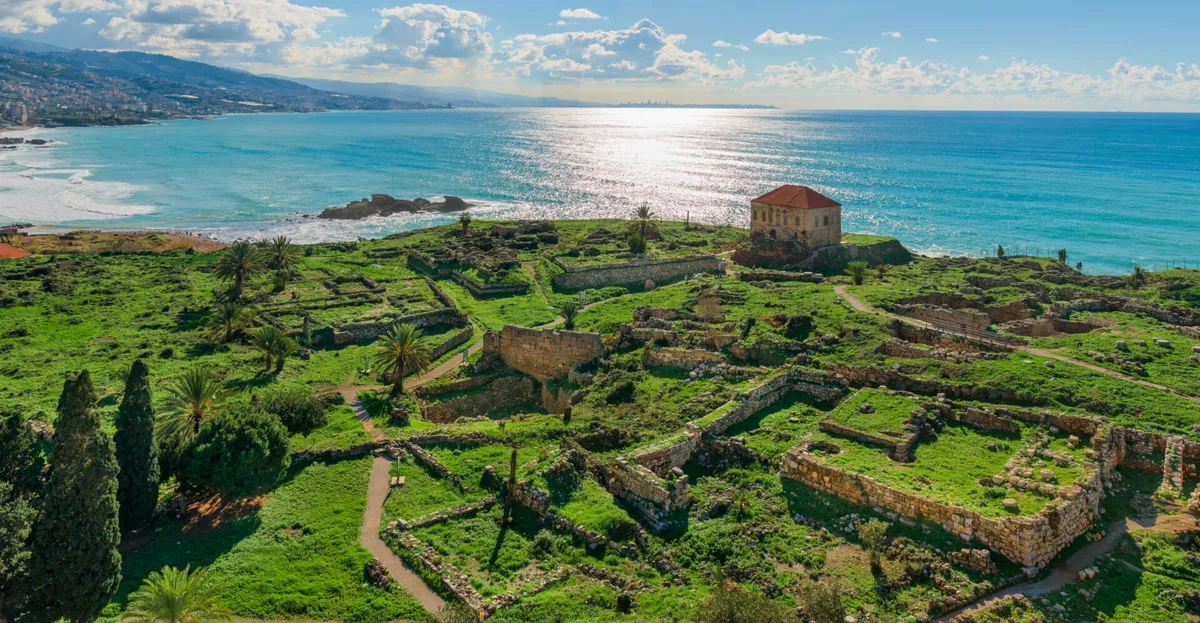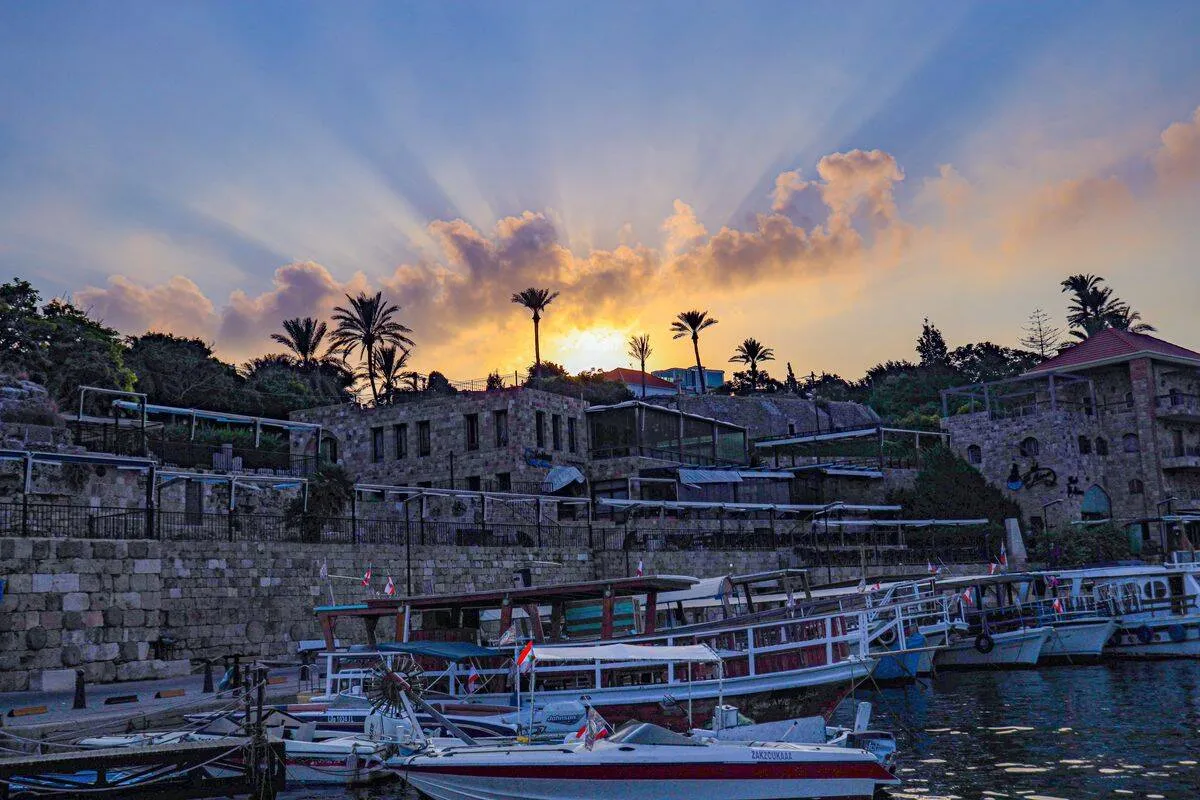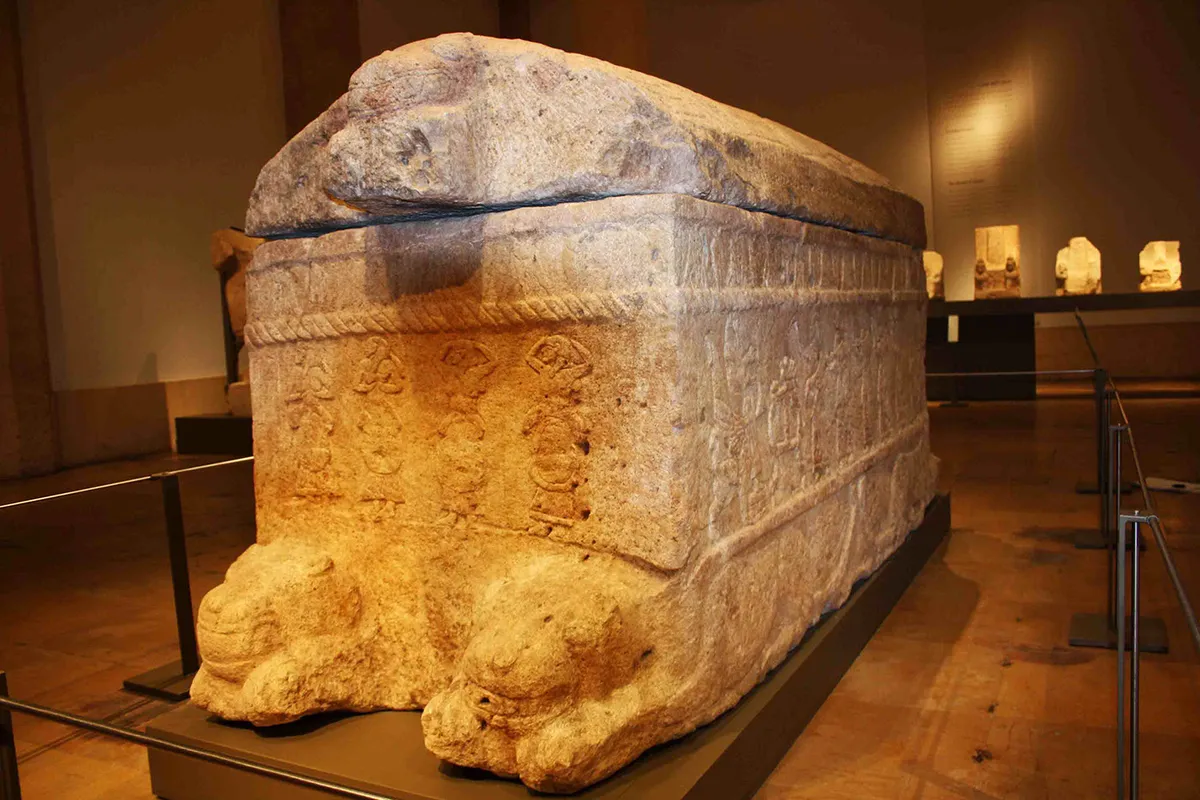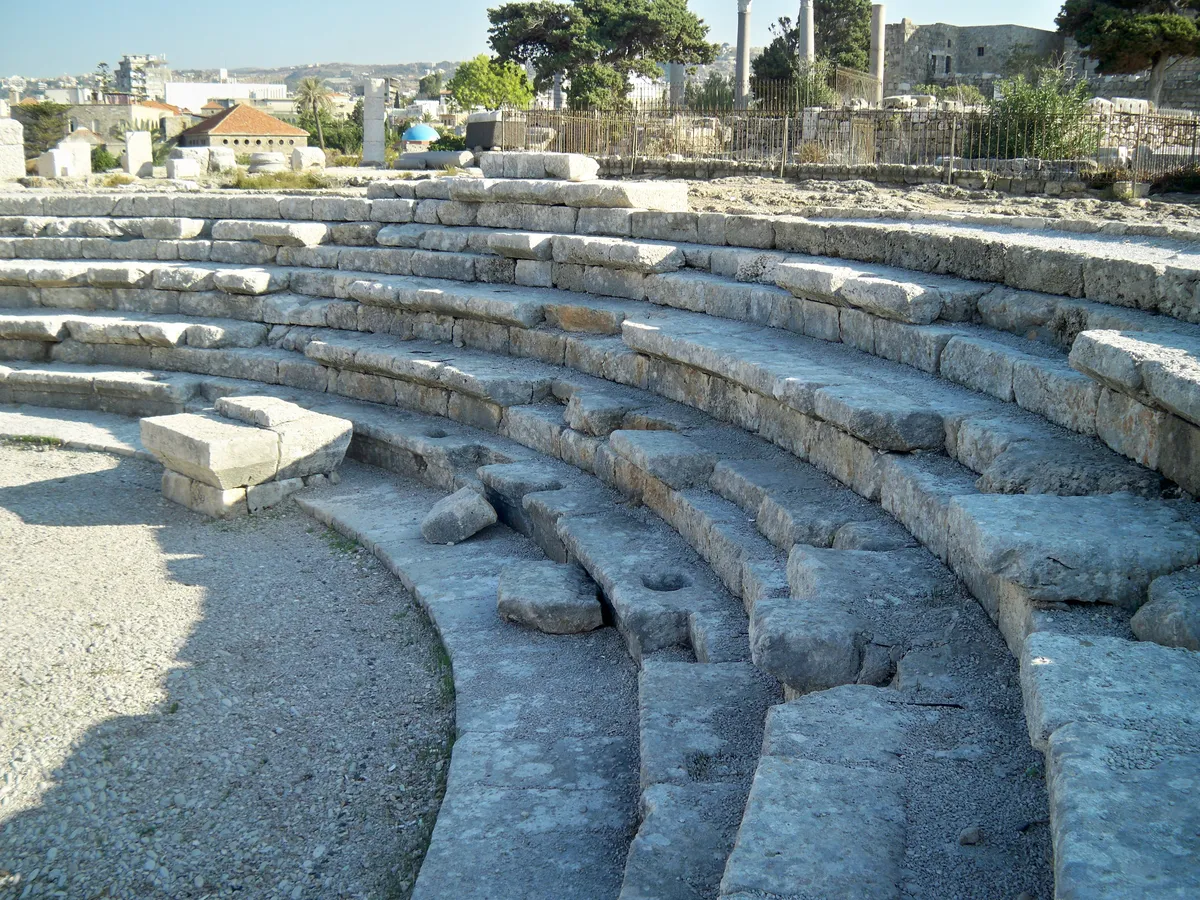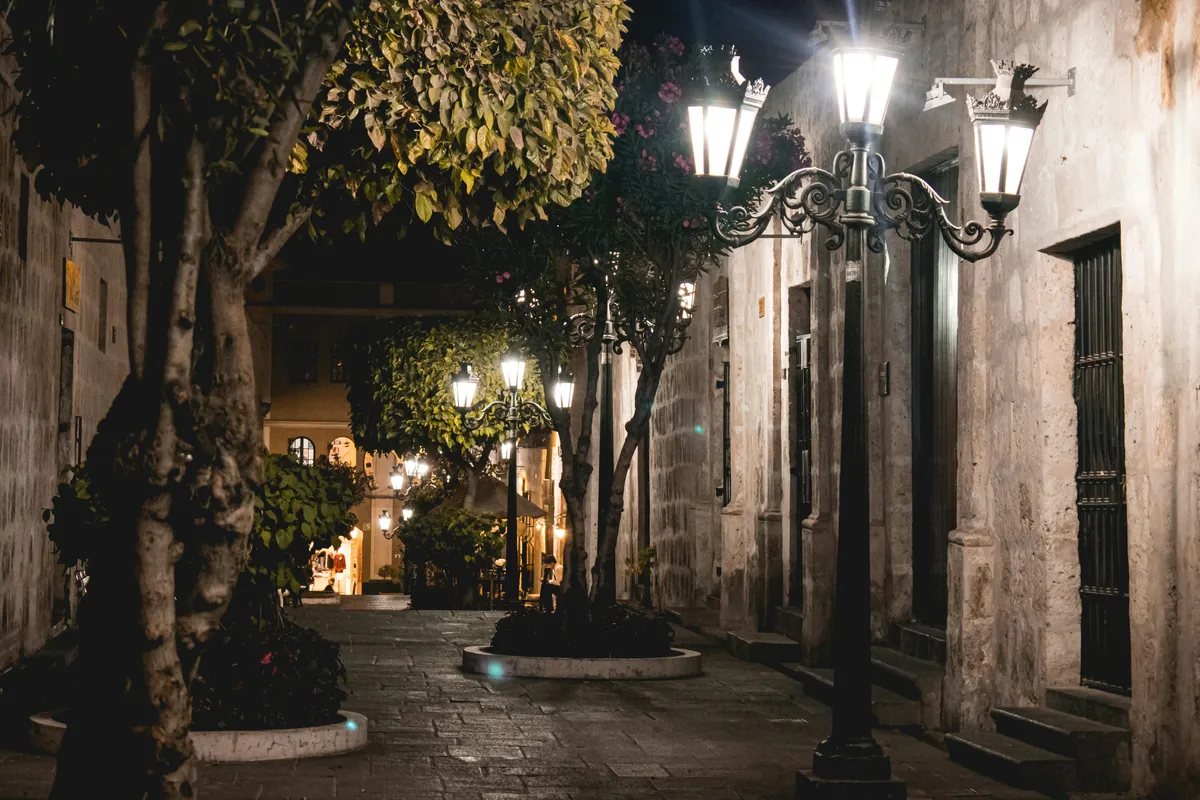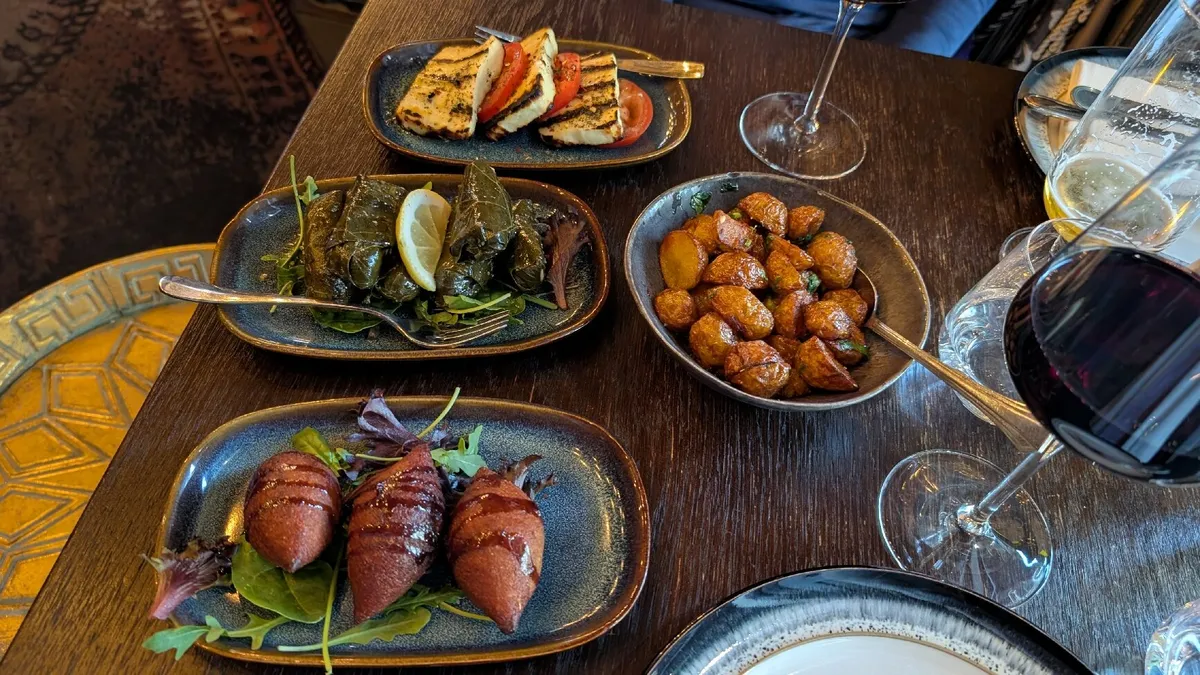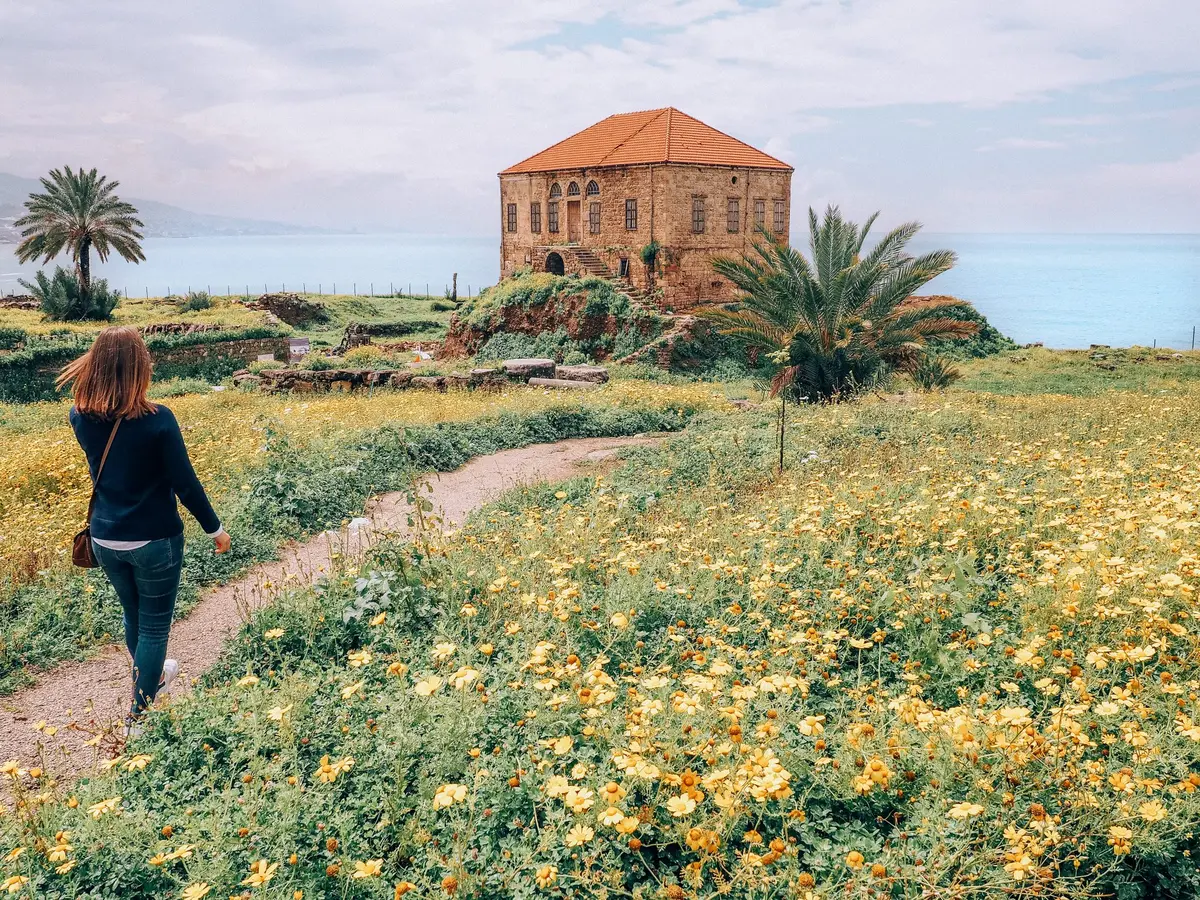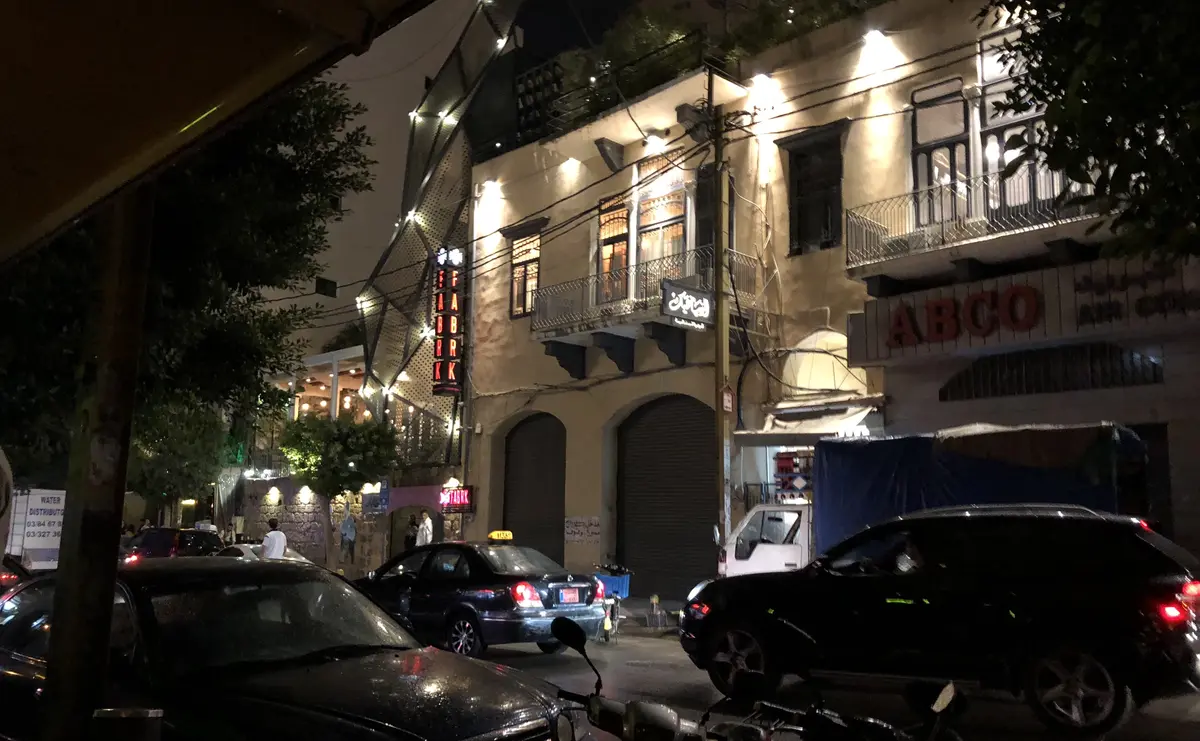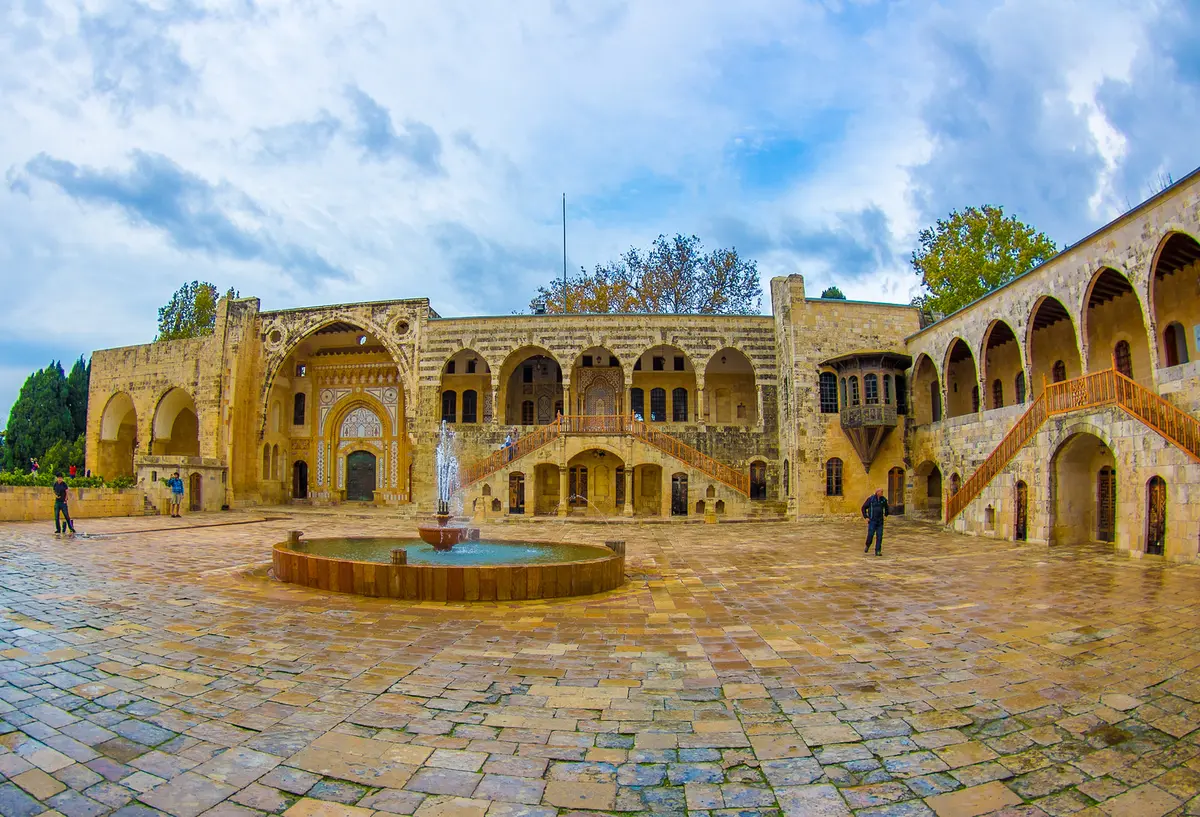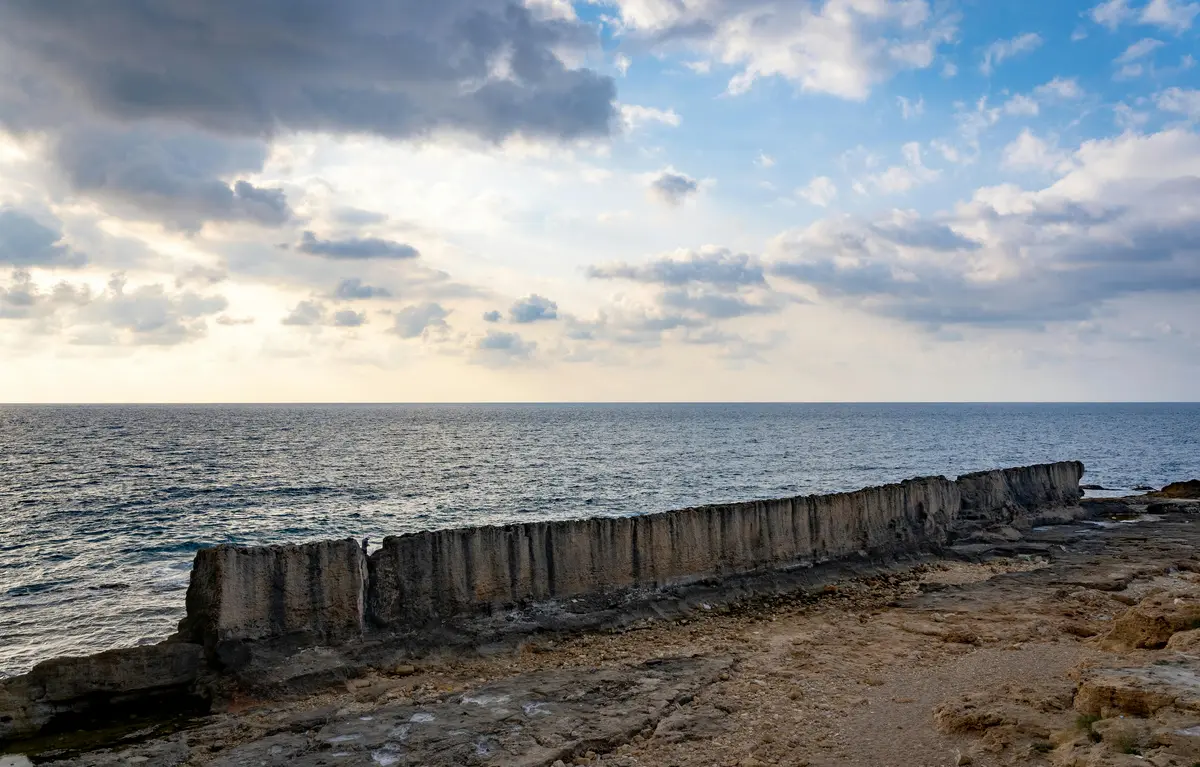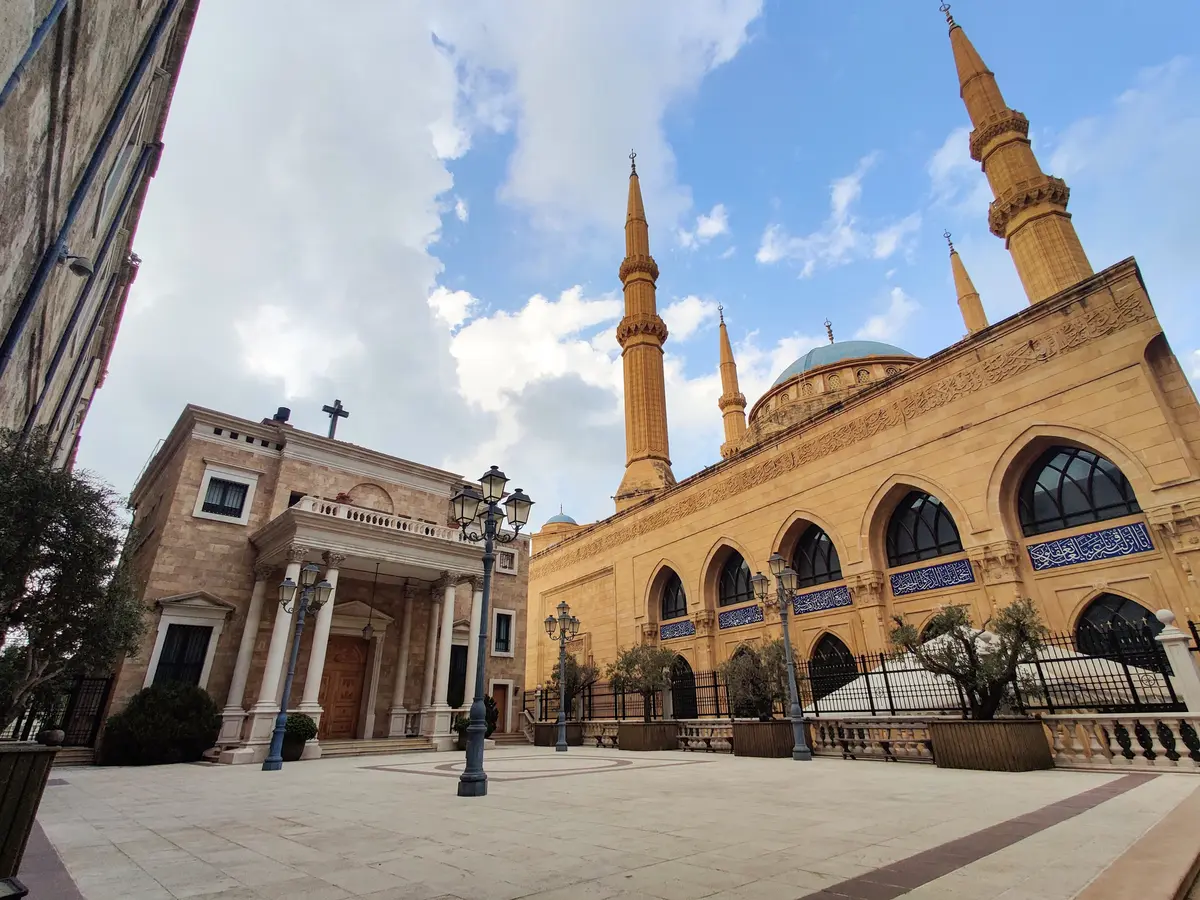The moment you step into Byblos, Lebanon—or Jbeil, as locals call it—the air changes. It’s a sensory blend of the salty Mediterranean breeze, jasmine from hidden courtyards, and the immense weight of 8,000 years of history. This isn’t just another ancient ruins site; it’s one of the oldest continuously inhabited cities on Earth, where Phoenician sailors and Roman centurions coexist with modern cafes and bustling restaurants. The seamless blend of ancient and contemporary is what elevates Byblos from a UNESCO World Heritage Site to a profound experience that stays with you long after you’ve left.
Is Byblos, Lebanon Worth Visiting?
For any traveler considering a trip to Lebanon, the answer is an unequivocal yes. This isn’t just a destination—it’s an immersion. Here, you can explore a 12th-century Crusader castle in the morning, sit in a Roman theater by afternoon, and experience vibrant nightlife in an ancient souk by evening. You’ll have “history under the soles of your shoes” while simultaneously being swept up in the energy of the present. The city radiates what travelers describe as “awesome vibes,” a unique atmosphere where every corner holds a new discovery. It satisfies the historian, the foodie, the beach lover, and the adventurer all at once.
The primary allure for modern travelers is the tangible juxtaposition of immense historical permanence with fleeting, vibrant moments of contemporary life. One moment you’re placing your hand on a 5,000-year-old city wall; the next, you hear modern music from a nearby pub in the Old Souk. This living dialogue between ancient and contemporary is the city’s unique attraction. While its historical layers—Neolithic, Phoenician, Roman, Crusader—provide a profound foundation, it’s the present-day experiences that bring this history to life: wildly inventive knafeh-stuffed croissants, modern yachts moored where Phoenician galleys once sailed, or sunset drinks at seaside bars. A visit to Byblos, Lebanon is not a passive history lesson; it’s an active experience where you personally feel the flow of time.
A Note on Safety for American Tourists
Understanding the U.S. Travel Advisory
Let’s address this head-on. The U.S. State Department maintains a “Level 4: Do Not Travel” advisory for Lebanon based on risks including crime, terrorism, civil unrest, and the ongoing economic crisis. Tensions along the borders with Syria and Israel contribute to this high-level warning. To ignore this official guidance would be irresponsible.
On-the-Ground Reality: A Different Story in Byblos
However, the on-the-ground reality in a well-established, tourist-focused coastal city like Byblos can be markedly different from remote border regions. My own experience and that of countless travelers support this distinction. While Lebanon faces immense challenges, popular tourist destinations like Byblos are often described as “relatively safe.” The city is accustomed to international visitors and maintains a secure environment. Unlike the high-risk areas mentioned in advisories, Byblos is where travelers report feeling comfortable and secure while exploring.
My Personal Experience and Actionable Safety Tips
During my time in Byblos, I felt a sense of calm and welcome that stood in stark contrast to the headlines. I walked the souks at night, dined at seaside restaurants, and explored archaeological sites without concern. That said, smart travel is essential anywhere in the world. Here are practical safety tips:
- Stay in populated areas: Especially at night, stick to the well-lit and bustling areas of the Old Souk and harbor.
- Use reliable transport: Arrange transportation through your hotel or use reputable, pre-booked taxi services. Always agree on the fare before departure.
- Be mindful of valuables: The economic crisis has increased petty crime in some parts of the country. While less of an issue in Byblos, be aware of your surroundings and keep valuables secure.
- Avoid demonstrations: Protests can occur spontaneously in Lebanon. If you see large gatherings forming, steer clear, as these can turn confrontational without warning.
- Drink bottled water: Stick to bottled or filtered water to avoid potential health issues.
The stark contrast between severe official warnings and positive on-the-ground testimonials creates a decision-making paradox. The decision isn’t a binary “safe” versus “unsafe”—it’s about understanding specific risks and making an informed personal assessment. While national political and economic instability causes the blanket advisory, the robust tourism economy in Byblos creates a localized bubble of relative safety and normalcy.
Top Things to Do in Byblos: A Walk Through History
The Byblos Archaeological Site (UNESCO World Heritage Site)
The main archaeological site isn’t just ruins—it’s a sprawling, open-air library where humanity’s stories are written in stone. Layers of civilization are literally stacked one on top of the other, allowing you to walk from a Crusader fortress to a Roman road to a Phoenician temple in minutes.
- The Crusader Castle (12th Century): Dominating the entrance, this magnificent fortress is your first stop. Built by Crusaders from local limestone and recycled Roman structures, the castle is a testament to the city’s medieval chapter. The real magic happens when you climb to the top of the keep—the panoramic view is breathtaking, with the entire archaeological park spreading below, framed by the brilliant blue Mediterranean Sea. You can clearly see the dry moat that once surrounded it.
- Insider tip: As one traveler highly recommended, consider hiring one of the local guides available at the entrance. They have a remarkable ability to “bring the stories of the Crusaders to life,” transforming stone ruins into vivid historical narratives.
- The Royal Necropolis (Second Millennium BC): Deeper within the site lies the historical heart of ancient Phoenicia. This necropolis contains nine royal tombs—impressive vertical shafts cut deep into the rock. Its claim to fame is the sarcophagus of King Ahiram, discovered in 1923. This is more than just a coffin; it bears one of the earliest and most complete known examples of the Phoenician alphabet—the direct ancestor of the Greek, Roman, and ultimately the English alphabets we use today. The connection is profound: you’re standing at a crucial milestone in human communication history. For ancient intrigue, the king’s grave shaft is inscribed with a chilling warning: “Warning here. Thy death is below.”
- Roman Theatre (3rd Century AD): Perched dramatically on the cliff’s edge, this beautifully reconstructed theater is about one-third the size of the original. Sitting on its stone tiers with the sea stretching before you, it’s easy to imagine the grandeur of Roman-era performances.
- Temple of the Obelisks: This Bronze Age temple has a fascinating modern story—it was physically moved by archaeologists to allow excavation of an even older temple beneath it. Here, over 1,500 small obelisks and votive offerings were discovered, many being human figurines covered in gold leaf. These treasures are now at the National Museum of Beirut.
- Temple of Baalat Gebal: This is the oldest temple on the site, dedicated to the “Mistress of Byblos,” the city’s patron goddess. Its ruins contain alabaster fragments inscribed with the names of Egyptian Old Kingdom pharaohs, a testament to deep ancient trade links between Byblos and Egypt.
- King’s Spring: Don’t miss this ancient water source steeped in mythology. According to legend, this is where the Egyptian goddess Isis sat and wept while searching for her murdered husband Osiris, adding an epic romance to the historical site.
Beyond the Citadel: Exploring the Living History of the Old City
- The Old Souk: If the archaeological site is the city’s soul, the Old Souk is its vibrant, beating heart. By day, it’s a charming labyrinth of ancient cobblestone streets perfect for leisurely strolls. Shops are filled with local handicrafts, beautiful textiles, “I Love Lebanon” t-shirts, and ancient marine fossils. As dusk falls, the souk undergoes a magical transformation. Narrow alleys become beautifully lit, and the area comes alive with live music and the buzz from fantastic pubs, restaurants, and sheesha bars.
- Insider tip: Be prepared for legendary Lebanese hospitality—as one traveler humorously warned, “watch out for the free shots of Arak” offered as you wander through sheesha bars in the evening.
- The Ancient Harbor: A short walk from the souk leads to one of the most picturesque spots in all of Lebanon. The Byblos harbor, one of the oldest in the world, is a stunning tableau of color and history. Brightly painted traditional fishing boats bob gently beside sleek, modern yachts—a perfect metaphor for the city itself. This was once the main hub for exporting Lebanon’s prized cedars to Egyptian pharaohs, a trade that built the city’s wealth and fame. Today, it’s lined with excellent seafood restaurants and is perfect for watching sunsets. For a different perspective, consider taking a short boat trip from the harbor to see the city’s ancient walls and castle from the sea.
Hidden Gems and Cultural Stops
- Byblos Fossil Museum (Memoire du Temps): This small, privately-owned museum is an absolute must-visit. It houses an incredible collection of 100-million-year-old marine fossils, exquisitely preserved in limestone slabs, all unearthed from nearby mountains. The quality and variety are world-class, and seeing a fossil of a fish caught in the act of swallowing another fish is particularly memorable.
- Byblos Wax Museum: A quirky and charming attraction offering a unique way to engage with Lebanon’s history. It features life-sized wax figures depicting scenes from Phoenician times to modern-day traditional life, including a glass-blowing workshop and a Lebanese wedding.
- Saint John-Marc Cathedral: Founded in 1115 AD by Crusaders, this beautiful Romanesque church is dedicated to the city’s patron saint, who is said to have established the first Christian community here. Its peaceful, lush gardens offer a quiet respite from the bustling souk.
The Taste of Byblos: A Food Lover’s Guide
Flavors of the Lebanese Coast
To visit Byblos without indulging in its culinary scene would be to miss half the experience. The food here is a celebration of the Mediterranean—fresh, vibrant, and meant to be shared. For those new to Lebanese cuisine, the concept of mezze is central: a wonderful tradition of ordering a variety of small plates—from creamy hummus and smoky baba ghanoush to fresh tabbouleh salad and savory pastries—that cover the table for everyone to enjoy. Given its location, Byblos excels at fresh seafood, often simply grilled with lemon, garlic, and olive oil to let the natural flavors shine.
Restaurants We Personally Vetted and Loved
- For Iconic Seafood and History: Pepe’s Byblos Fishing Club
- The Vibe: This is more than a restaurant; it’s a Byblos institution. Founded in the 1960s by the legendary Pepe Abed, this spot on the old harbor has hosted celebrities, artists, and travelers for decades. The walls are lined with photos of its famous clientele, and the atmosphere is a perfect blend of rustic fishing port charm and old-world glamour.
- The Food: The menu is straightforward and excellent: fresh seafood. This is the place to “gorge on seafood,” as one traveler put it. Order the catch of the day, grilled to perfection, and enjoy it with a cold Lebanese beer as you watch the sun dip below the horizon. It’s an iconic Byblos experience.
- For Innovative Lebanese Fusion: Feniqia and Locanda A La Granda
- The Vibe: These two restaurants represent the creative, modern pulse of Byblos’s culinary world. Locanda A La Granda, tucked away in the old souk, is renowned for its romantic and intimate atmosphere, with a beautiful outdoor terrace overlooking the city’s historic ramparts. Feniqia offers a warm, inviting space known for stunning food presentation and an imaginative take on Lebanese classics.
- The Food: This is where tradition gets a playful twist. At Locanda, travelers rave about unique dishes like the “Chicken Osmalliyeh”—a crunchy, savory-sweet creation—and their inventive mezze. At Feniqia, don’t miss the “Hummos with pesto” or their mosaic pizza, which beautifully blends global techniques with local flavors.
- For an Unforgettable Breakfast: L’abeille D’or
- The Experience: Sometimes the most memorable meals are the most unexpected. One travel blogger recounted an experience here that’s too good not to share: a fresh, flaky croissant, sliced open and stuffed with warm, gooey knafeh (a traditional sweet cheese pastry) and then drizzled with chocolate sauce. It’s a decadent, creative, and utterly delicious breakfast that perfectly captures the inventive spirit of modern Lebanese food culture.
- For Authentic Local Eats: Abou Joseph
- The Vibe: Located right in the middle of the bustling souk, this is your spot for a no-frills, authentic Lebanese meal where the locals eat.
- The Food: Expect perfectly executed classics. This is the place to try traditional Kibbeh (a bulgur and minced meat dish) and flavorful grilled meats, all served with the genuine hospitality Lebanon is famous for.
Top-Rated Restaurants in Byblos
| Restaurant Name | Specialty | Price Range | Vibe / Best For | “Don’t Miss” Dish |
| Pepe’s Byblos Fishing Club | Fresh Seafood, Lebanese Mezze | $$-$$$ | Historic, Casual, Sunset Views | Freshly Grilled Fish |
| Feniqia | Modern Lebanese Fusion | $$-$$$ | Creative, Upscale Casual | Hummos with Pesto |
| Locanda A La Granda | Lebanese/International Fusion | $$-$$$ | Romantic, Intimate, Souk Setting | Chicken Osmalliyeh |
| Abou Joseph | Traditional Lebanese | $-$$ | Authentic, Bustling Souk Location | Kibbeh |
| L’abeille D’or | Breakfast & Sweets | $ | Casual, Quick Bite | Knafeh Chocolate Croissant |
Your Byblos Trip Planner
Best Time to Visit Byblos
Timing your visit can make a good trip great. The consensus is clear: the best times to visit Byblos, Lebanon are spring (April to June) and fall (September to November). During these months, the weather is idyllic, with comfortable temperatures ranging from to ( to ), perfect for exploring outdoor ruins. Crowds are smaller than in the summer peak, and the landscape is either lush with spring flowers or bathed in golden autumn light. Summer (July and August) is fantastic for beach lovers, but be prepared for higher temperatures and more tourists. Winter offers a quiet, charming atmosphere, though rain is more frequent and beach activities are limited.
Getting from Beirut to Byblos
Byblos is conveniently located just 40 km (about 26 miles) north of Beirut, making it an easy and popular day trip.
- Private Taxi: This is the most comfortable and direct option. The journey takes approximately 30-45 minutes, depending on Beirut’s notorious traffic. Prices can vary, but expect to pay between $40 and $70 for a one-way trip. It’s always best to use a reputable service and agree on the price before you depart.
- Shared Minibus (“Service”): For a more adventurous and budget-friendly experience, do as the locals do. These minibuses can be caught from major transportation hubs in Beirut like Cola Junction or Dora. The cost is significantly lower, typically just a few US dollars, though you should be prepared for a less direct journey with multiple stops.
- Rental Car: If you’re comfortable driving in Lebanon, renting a car offers the most flexibility. The drive is straightforward along the coastal highway and takes about 30-45 minutes without traffic.
- Organized Day Tour: Dozens of tour operators in Beirut offer excellent full-day trips that bundle Byblos with other nearby attractions like the stunning Jeita Grotto and the Shrine of Our Lady of Lebanon in Harissa. These tours typically include transportation, a guide, and sometimes lunch, making them a hassle-free option.
Where to Stay in Byblos: Recommended Hotels
Staying overnight in Byblos is highly recommended to fully appreciate its evening charm. Here are some top-rated options based on traveler reviews:
- Luxury (Byblos Sur Mer): For a truly special stay, this 5-star hotel is unmatched. Located right on the water with a private beach, it offers luxurious rooms, stunning sea views, and impeccable service. It’s the perfect choice for a romantic getaway or a high-end escape.
- Mid-Range/Boutique (Aleph Boutique Hotel and Monoberge Byblos Hotel): These hotels offer fantastic value and are consistently praised by travelers. Aleph Boutique boasts a perfect location for exploring the old souks, beautifully designed rooms, and incredibly friendly staff. Monoberge Byblos is another traveler favorite, noted for its welcoming management, excellent breakfast, and comfortable rooms.
- Budget-Friendly/Guesthouse (Byblos Guest House): This is a gem for those seeking a more personal, local experience. Run by the wonderfully hospitable host, Joseph, it offers spacious, clean rooms, many with lovely sea views. Traveler reviews are filled with praise for the warm welcome and home-like atmosphere.
- Vacation Rentals (Airbnb): Byblos also has a great selection of vacation rentals, from modern apartments with private plunge pools to charming lofts with direct sea views, offering a more independent style of travel.
Sample One-Day Byblos Itinerary
If you only have one day, here’s a plan to help you make the most of it.
| Time | Activity | Notes & Insider Tips |
| Morning (9:00 AM – 1:00 PM) | Explore the Byblos Archaeological Site | Arrive early to avoid midday heat and the biggest crowds. Allow at least 3-4 hours to fully explore the Crusader Castle, Roman Theatre, Royal Necropolis, and various temples. |
| Lunch (1:00 PM – 2:30 PM) | Lunch at a Souk Restaurant | Head into the Old Souk. Choose Locanda A La Granda for a creative fusion meal or Abou Joseph for authentic Lebanese classics in a bustling setting. |
| Afternoon (2:30 PM – 5:30 PM) | Wander the Old Souk & Visit Museums | Get lost in the charming cobblestone alleys, shop for souvenirs, and admire the ancient architecture. Pop into the incredible Fossil Museum (Memoire du Temps) for a quick but fascinating look into prehistory. |
| Evening (5:30 PM onwards) | Sunset at the Harbor & Dinner | Make your way down to the ancient port to watch the sunset over the Mediterranean—a truly magical moment. Cap off your day with a memorable seafood dinner at the iconic Pepe’s Fishing Club. |
To visit Byblos, Lebanon is to walk through the pages of a story that began at the dawn of urban civilization, a city of incredible resilience that has been continuously inhabited through the rise and fall of countless empires. What’s most remarkable is that Byblos doesn’t feel like a relic—it wears its immense history with a light and graceful touch, inviting you not just to observe its past but to become part of its living, breathing present. A trip here is more than a history lesson; it’s a connection. It’s the thrill of realizing that the alphabet on the page you’re reading has its roots in Phoenician inscriptions carved thousands of years ago, and the simple joy of a perfect meal in a place where people have gathered for millennia. You’ll leave Byblos Lebanon with more than just photos and souvenirs—you’ll leave with a piece of its magic, a profound sense of connection to a story still being written every single day.
